Introduction to Lawn Fertilizer
Welcome to a comprehensive guide on ‘How to Fertilize Your Lawn Like a Pro’. The purpose of this article is to help you understand the importance of fertilizer for the lawn with quality information. It is not just about making your lawn greener; it’s about maintaining a healthy live ecosystem in your backyard. Indeed, a correctly fertilized lawn improves the soil structure, encourages dense growth to crowd out weeds, and reduces the risk of diseases and pest infestation. An essential practice in lawn care, fertilizing is more than merely spreading fertilizer across your yard. It involves understanding the correct type and amount of fertilizer your lawn needs, the ideal time to apply it, and the right way to distribute it. This article aims to cover all these aspects in detail, providing you with a step-by-step guide to achieving a lawn that would be the envy of your neighborhood. In the following sections, we will delve into the types of fertilizers available in the market, how to pick the correct one for your lawn, the best time to fertilize, and how to apply the fertilizer. We will also discuss some professional tips and tricks to get the best out of your process. So, whether you are a beginner or an experienced gardener looking to up your lawn care game, this guide is for you.
12 Tips for Fertilizing Your Yard
1. Understand Your Soil: Before fertilizing, conduct a soil test to determine its pH and nutrient levels. This will guide you in selecting the right type and amount of fertilizer.
2. Choose the Right Fertilizer: Select a fertilizer with the appropriate balance of nitrogen, phosphorus, and potassium based on your test results. Different stages of grass growth may require different formulations.
3. Follow a Schedule: Establish a schedule based on the needs of your specific grass type and climate. Typically, lawns benefit from fertilization in spring and fall.
4. Use Slow-Release Fertilizers: Opt for slow-release fertilizers as they provide a steady supply of nutrients over an extended period, promoting even and sustained growth
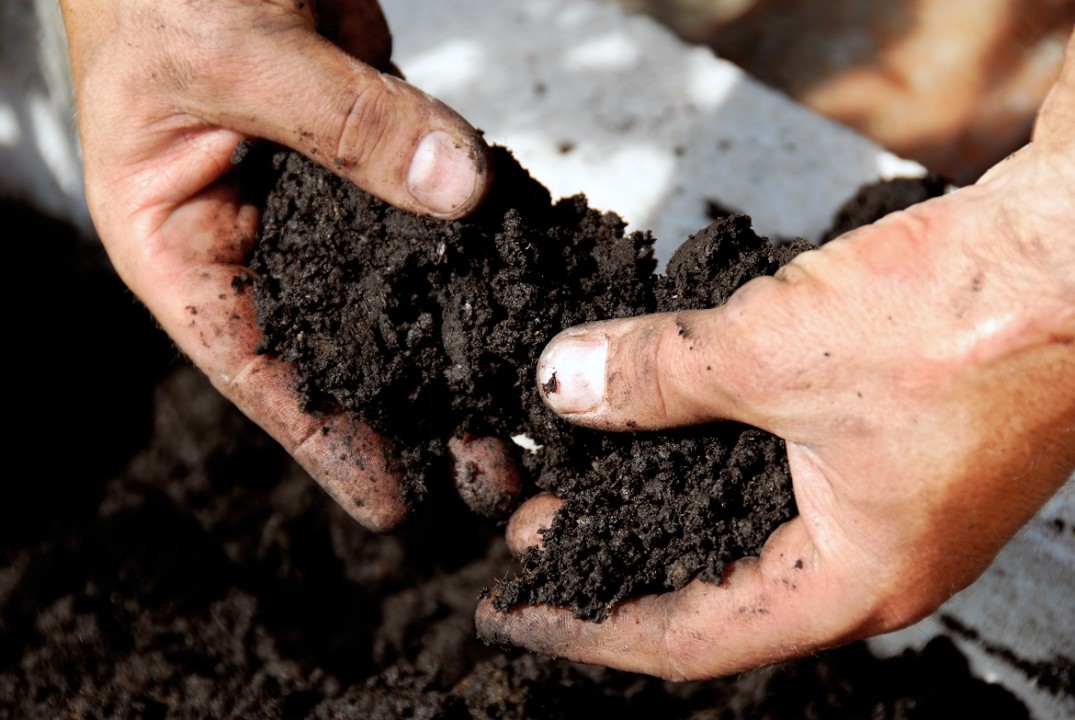

5. Apply Fertilizer at the Right Time: Apply fertilizer when your grass is actively growing. Avoid fertilizing during extreme heat or drought conditions.
6. Proper Application Technique: Use a spreader to ensure an even distribution of fertilizer. Avoid overlapping to prevent over-fertilization, which can harm your lawn.
7. Adjust Application Rates: Follow the recommended application rates on the fertilizer packaging. Over-application can lead to nutrient runoff and environmental issues.
8. Watering After Application: Water your lawn after fertilizing to help the nutrients penetrate the soil and reach the roots. This will also prevent fertilizer burn on grass blades.
9. Mow at the Right Height: Maintain the proper mowing height for your grass type. Taller grass shades the soil, reducing weed growth and promoting a healthier lawn.
10. Consider Organic Alternatives: Explore organic fertilizers, such as compost or manure, as they contribute to long-term soil health and microbial activity.
11. Monitor and Adjust: Regularly assess the condition of your lawn. If you notice signs of nutrient deficiencies or excess, adjust your plan accordingly.
12. Keep Safety in Mind: Follow safety guidelines when handling and applying fertilizers. Store them in a secure location away from children and pets.

Understanding Your Lawn
The journey to expert fertilizer professional begins with a deep understanding of your lawn. This involves identifying your grass type, understanding the soil type and pH level, and recognizing signs of nutrient deficiency.
The Soil Test
The soil test is the first step, identifying your grass type, is crucial as different grass types have varying nutrient needs. For instance, cool-season grasses like Kentucky bluegrass, ryegrass, and fescues generally require high nitrogen levels, while warm-season grasses like Bermuda grass, St. Augustine, and Zoysia prefer a more balanced fertilizer with equal parts nitrogen, phosphorus, and potassium. Next, understanding the soil type and pH in your lawn is vital. The soil type affects water and nutrient retention, while pH levels determine nutrient availability. For instance, clay soil retains more water and nutrients compared to sandy soil but can become easily compacted. Regarding pH, a level of 6.0 – 7.0 is generally ideal for lawns as it promotes optimal nutrient uptake. Soil testing kits are readily available and easy to use for determining your soil type and pH level.
Finally, recognizing signs of nutrient deficiency is crucial in maintaining a healthy lawn. Yellowing grass may indicate a nitrogen deficiency, while a purplish tint can point to a phosphorus shortage. If your lawn shows signs of nutrient deficiency, it’s time to intervene with appropriate fertilizer application.
In conclusion, understanding your lawn’s specific needs is paramount in nourishing it effectively. By identifying your grass type, knowing your soil type and pH, and recognizing nutrient deficiencies, you can select the right fertilizer and use it at the right time, ultimately achieving a lush, green lawn.
Understanding Fertilizers
Understanding fertilizers is a crucial step in maintaining a lush, green lawn. There are two main types of fertilizers: organic and synthetic. Organic fertilizers are derived from plant or animal waste, or mineral deposits. They release nutrients slowly, enrich the soil, and encourage beneficial soil microorganisms. Synthetic fertilizers, on the other hand, are made from minerals, gases, and waste from the petroleum industry. They are fast-acting and provide nutrition quickly to grass. However, they do not improve soil health in the long run and may harm beneficial soil organisms. The effectiveness of a fertilizer is indicated by the N-P-K ratio on its label. N-P-K stands for Nitrogen, Phosphorus, and Potassium, the three primary content required by plants. Nitrogen promotes leaf and stem growth, phosphorus is essential for root development, and potassium improves overall plant health. The N-P-K ratio is represented by three numbers, such as 10-10-10. A 10-10-10 fertilizer contains 10% each of nitrogen, phosphorus, and potassium. Understanding the N-P-K ratio helps you select a fertilizer that provides the right amount of nutrients to your lawn. You can buy a bag of compost in your town or make your own real compost from scraps right in your own home.
Check that Fertilizer Bag for Important Information
Choosing the right lawn fertilizer for your lawn as a crucial step. This depends on your grass type, soil condition, and the specific nutrients your lawn lacks. If your lawn is deficient in nitrogen, a fertilizer with a high first number in the N-P-K ratio would be beneficial. If your soil lacks phosphorus for root development, the second number should be higher. And if Potassium, which bolsters overall plant health, is deficient, the last number should be higher. By understanding your lawn and its needs, you can select a right type and ratio of fertilizer to optimize its health and growth.
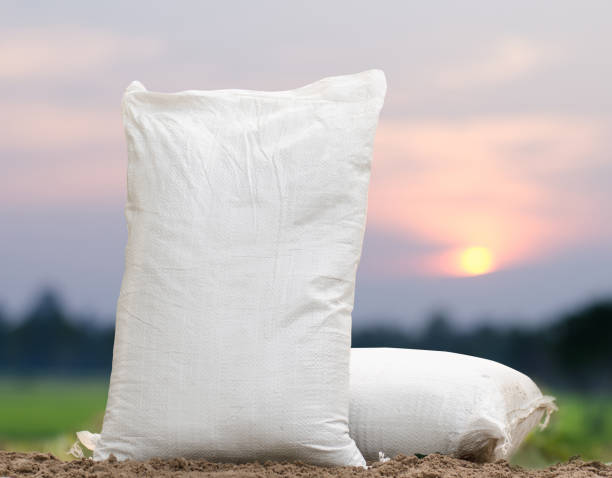
When to Fertilize Your Lawn
Having understood what fertilizers are and how to pick the right one for your lawn at your home, the next logical step is to determine when to apply them. Fertilizing is a task that requires both precision and timing to yield optimal results. Best times to fertilize your lawn typically fall during spring and fall seasons. Spring fertilizer helps to kick-start your lawn’s growth after winter, while fall fertilizer prepares turf for a dormancy period by strengthening its root system.
Your Lawn’s Soil Needs Help
There are, however, certain signs that can indicate your lawn needs fertilizer outside of these periods. If you notice that grass is not as green as it used to be, or it doesn’t bounce back quickly after being stepped on, it might be time to consider fertilizing. Yellow patches or slow growth are also signs of a nutrient-deficient lawn. It’s important to note that these signs can also be symptoms of other lawn problems, so it’s essential to diagnose correctly before proceeding with a bag of fertilizer.
Are You Ready for Lawn Fertilization?
When it comes to newly seeded or sodded lawns, fertilizer should be approached with care. Newly seeded lawns should be fertilized approximately six to eight weeks after the seeds are sown. This gives grass time to establish roots before being exposed to high nutrient levels. Sodded lawns, on the other hand, can be fertilized four to six weeks after installation. These timelines ensure that as grass has a chance to settle into the soil, reducing the risk of burning or damaging the young plants with too much fertilizer too soon.
How to Apply Fertilizer Like a Professional
In order to fertilize your lawn effectively, it’s crucial to have the right equipment, like a spreader.
The Fertilizer Spreader
The primary tool you’ll need is a fertilizer spreader. There are two main types of spreaders: broadcast (or rotary) spreaders and drop spreaders. The broadcast spreader, as the name suggests, disperses the fertilizer in a wide arc, making them ideal for large, open areas. The drop spreader, on the other hand, will slow release the fertilizer directly below the equipment, providing a more precise application perfect for small or uniquely shaped lawns.
When it comes to application techniques, consistency is key. Start by filling your spreader with the recommended pounds of fertilizer. It’s best to apply half of the fertilizer in one direction (north to south), and the other half in a perpendicular direction (east to west). This cross-hatching technique ensures an even application, reducing the risk of over-fertilization or nutrient burn. It’s also a good idea to water your lawn lightly after, which helps the nutrients penetrate the soil and reach grass roots more efficiently.
Safety should never be overlooked when handling fertilizers, as they can be harmful if not used correctly. Always wear protective clothing, including gloves and safety glasses, to protect your skin and eyes from direct contact. If you spill fertilizer on a hard surface, sweep it up rather than hosing it down to prevent the chemicals from entering storm drains. Store any leftover fertilizer in a dry, cool place out of reach of children and pets. Remember, the key to a beautiful lawn lies not only in the right techniques but also in the responsible handling and storage of fertilizers.
Post-Fertilization Care of Grass
Post-fertilization care is pivotal in ensuring your lawn reaps the maximum benefits. The first step is watering. This process aids in dissolving the fertilizer and allowing it to penetrate the soil, reaching the grass roots where it’s needed most. However, don’t drench your lawn; a light to moderate watering will do the trick. Furthermore, it’s advisable to plan your project around the rain forecast, as natural rainfall can provide the best watering. Managing foot traffic is another crucial aspect of care. Afterward, you should minimize foot traffic to allow the fertilizer to settle and work efficiently. This means keeping kids, pets, and lawn furniture off the grass for at least a day or two.
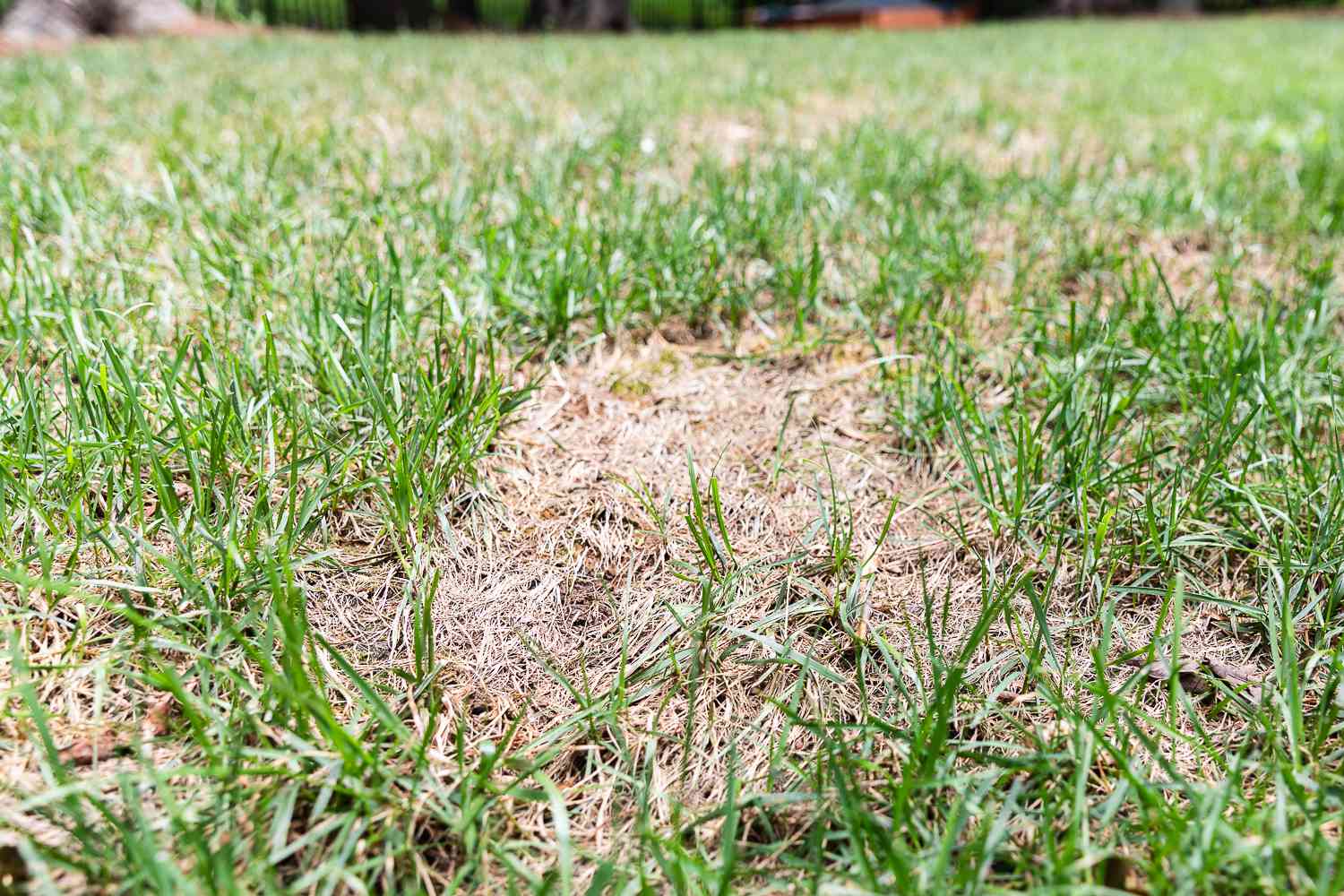
Common Mistakes to Avoid While Fertilizing Your Lawn
Just as post-fertilization care is crucial, avoiding common mistakes before and during the process is equally important. Over or under-fertilizing is a common pitfall that many gardeners fall into. Over-fertilizing can lead to a rapid, yet unhealthy growth in your lawn and can cause burning or discoloration. On the other hand, under-fertilizing does not provide turf with sufficient nutrients it needs to thrive, resulting in a weak and thin lawn. To avoid these issues, it’s essential to follow the manufacturer’s instructions on the fertilizer bag. Next, timing is crucial when it comes to your lawn. Fertilizing at the wrong time can result in wastage of resources and might not yield the desired results. It’s usually best to fertilize in the early morning or late evening when temperatures are cooler, and the fertilizer will not evaporate. The key is to fertilize when your lawn is in its active growth phase, which will vary depending on type of grass you have.
Lastly, not all fertilizers are created equal. Using the wrong type of fertilizer can do more harm than good to your lawn. For instance, some fertilizers are high in nitrogen, which encourages leafy growth but can lead to weaker roots. On the other hand, a fertilizer that’s high in phosphorus will promote strong root growth but might not give you the lush green top growth you desire. Therefore, it’s crucial to understand your lawn’s needs and choose a fertilizer that balances these needs. It may require a bit of research, but it’s well worth the effort for a healthy, thriving lawn.
Top 7 Mistakes to Avoid While Fertilizing
1. Over-Fertilization: Applying too much fertilizer can harm your lawn by causing excessive growth, burning the grass, and contributing to environmental issues like nutrient runoff. Follow recommended application rates to prevent this.
2. Ignoring Soil Test Results: Neglecting to conduct a this test is a common mistake. Soil tests provide crucial information about nutrient levels and pH, helping you decide on the right fertilizer and avoid unnecessary applications.
3. Incorrect Timing: Fertilizing at the wrong time can be detrimental. Applying fertilizer during periods of extreme heat, drought, or dormancy may not be effective and could even stress the grass. Follow a proper schedule based on grass type and local climate.
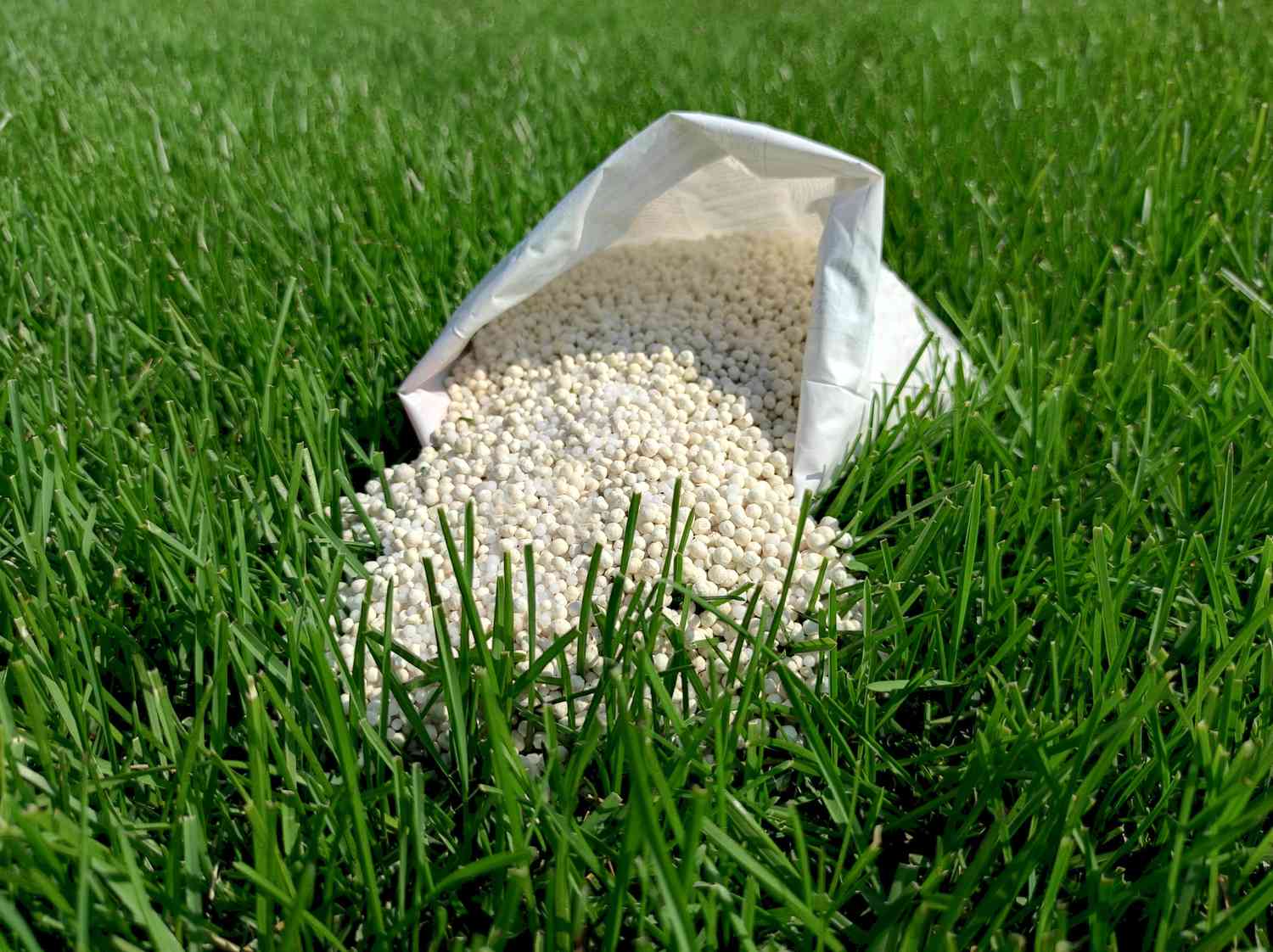
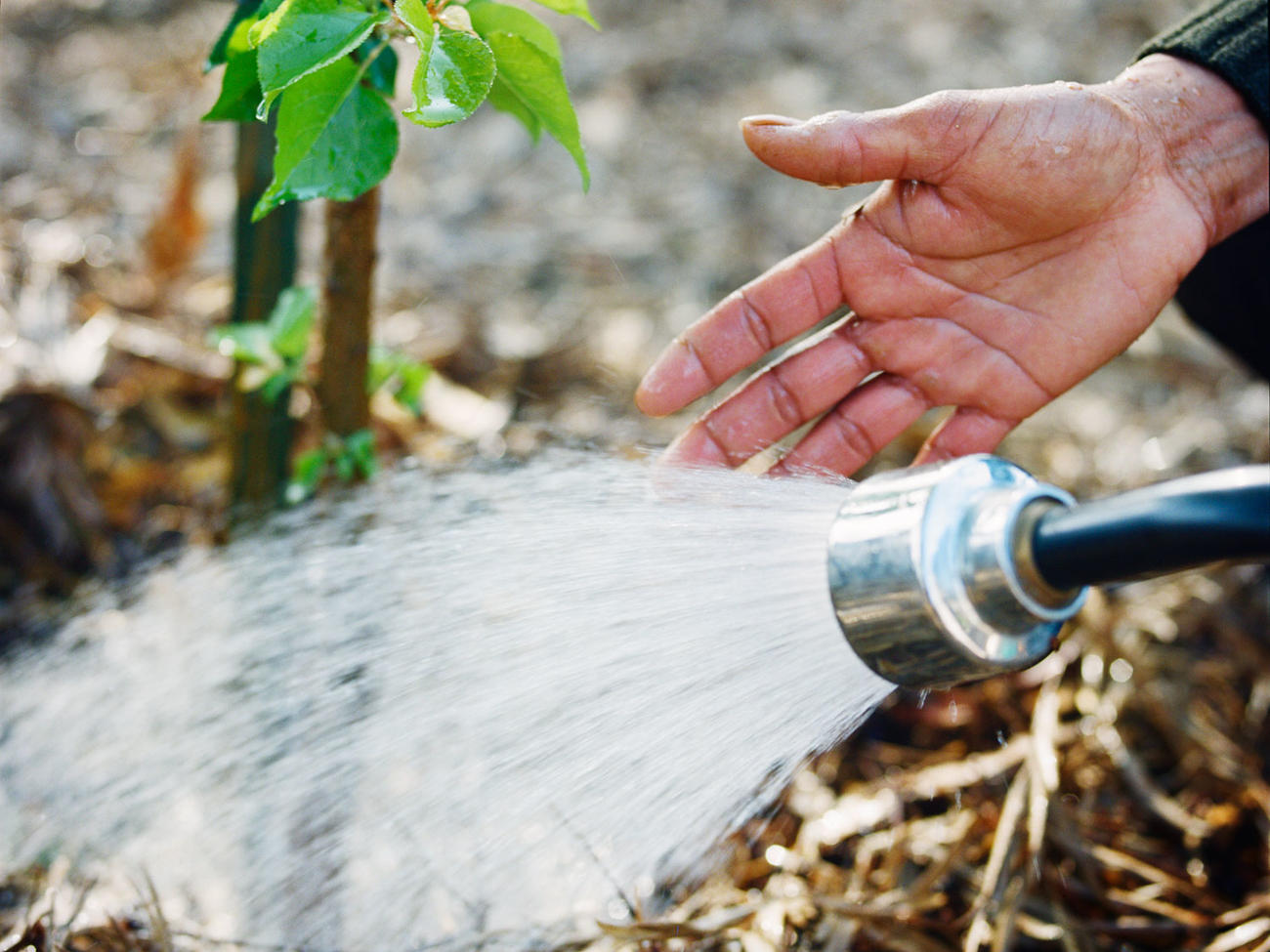
4. Using the Wrong Fertilizer: Each lawn has specific nutrient requirements. Using the wrong type of fertilizer or an unbalanced formulation can lead to nutrient imbalances, negatively impacting the health of your lawn. Choose a fertilizer based on your soil test results and the needs of your grass.
5. Poor Application Techniques: Uneven application or improper spreading of fertilizer can result in uneven growth and nutrient distribution. Use a spreader to ensure consistent coverage, and avoid overlapping to prevent over-application in certain areas.
6. Neglecting Watering After Application: Failing to water your lawn after applying fertilizer can limit nutrient absorption. Watering helps the fertilizer reach the soil and promotes its assimilation by the grass roots. Always follow up with a thorough watering.
7. Ignoring Environmental Factors: Fertilizing without considering environmental factors can lead to issues. Be mindful of local regulations, and avoid fertilizers near water bodies to prevent nutrient runoff. Additionally, take precautions to prevent fertilizer from reaching sidewalks and driveways.
By steering clear of these common mistakes, you can ensure that your practices contribute to a healthy and vibrant lawn without causing harm to the environment.
Conclusion on how to fertilize your lawn
In conclusion, fertilizing your lawn like a pro is a matter of understanding the fundamentals. It’s about knowing when to fertilize, how much to apply, and what type of fertilizer best suits your lawn’s specific needs. These crucial points cannot be overstated as they lay the groundwork for a healthy, vibrant lawn. Over-fertilizing or under-fertilizing, doing it at the wrong time, or using the incorrect type of fertilizer can be detrimental to your lawn’s health. Therefore, always adhere to the recommended amount of fertilizer and apply it during the appropriate season to maximize its effectiveness.
Notwithstanding the potential pitfalls, the journey to a lush, green lawn is achievable, exciting, and immensely rewarding. The process of nurturing your lawn to its fullest potential can be a gratifying experience, as you watch it transform from a patchy, underfed plot to a vibrant, lush green expanse. So don’t hesitate to start your journey. Remember, the key to achieving a lawn worthy of a pro is patience, consistency, and applying the knowledge you have gained.In the end, the effort you put into your lawn will pay off manifold, as you receive compliments from neighbors and enjoy the satisfaction of a well-nurtured, beautiful lawn. With the right approach, you’ll not only improve your lawn’s health and aesthetic appeal but also increase your home’s overall value. So, why wait? With the knowledge you now possess, take the leap and begin your lawn fertilizer journey today.
Frequently Asked Questions
Q1: Why is fertilizing important for my lawn?
A1: Fertilizing is crucial for maintaining a healthy lawn ecosystem. It improves soil structure, encourages dense growth, reduces weed invasion, and minimizes the risk of diseases and pests.
Q2: How do I choose the right fertilizer?
A2: Conduct a soil test to understand your lawn’s nutrient needs. Based on the results, pick a fertilizer with the correct balance of nitrogen, phosphorus, and potassium. Consider grass type and growth stages.
Q3: When is the best time to fertilize my lawn?
A3: The ideal times for lawn fertilization are typically in spring and fall. However, you can also fertilize if you notice signs of nutrient deficiency, such as yellowing grass. Avoid extreme weather conditions and follow a proper schedule.
Q4: What common mistakes should I avoid?
A4: Avoid over-fertilization, neglecting soil test results, incorrect timing, using the wrong fertilizer, poor application techniques, skipping watering after application, and ignoring environmental factors. These can harm your lawn and the environment.
Q5: How do I apply fertilizer like a professional?
A5: Use a spreader for even distribution. Follow their recommended application rates, apply in two perpendicular directions, and water your lawn afterward. Wear protective gear, and store leftover fertilizer safely.
turfmedic.com/lawn-fertilization-services/

Recent Comments